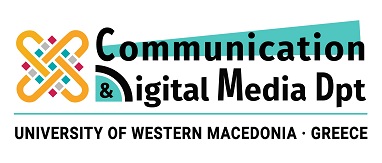CDM 3114 GRAPHIC DESIGN AND VISUAL COMMUNICATION
LEVEL OF STUDY: UNDERGRADUATE
COURSE UNIT CODE: CDM 3114
SEMESTER: 3rd
COURSE TITLE: GRAPHIC DESIGN AND VISUAL COMMUNICATION
TEACHING WEEKLY HOURS: 2 H/W LECTURES and 2 H/W LAB EXERCISES
ECTS: 4
COURSE TYPE: CORE COMPULSORY
TEACHING AND EXAM LANGUAGE: GREEK
COURSE DELIVERY TO ERASMUS STUDENTS: YES (in English)
Graphics are an important part of visual communication and are used to facilitate the transfer and understanding of information but also to influence the thinking of the public. The aim of the course is to introduce students to the theory and techniques of effective graphic composition that will be used to convey information and messages to targeted audiences. The graphic composition requires an appropriate combination of shapes, text, images, and colors to produce complete stylish graphics for any medium such as paper, posters, metal and plastic packaging, and clothing, but also for electronic media such as websites, screens, social media, and interactive multimedia applications.
Students will also be exposed to cases of good and bad design and will be taught that communication with graphics may vary depending on the characteristics of the audience (country of origin and cultural background, age, educational level, professional group). They will also be taught how to choose the proper design and combination of images and colors to convey messages to different target groups. The course will also examine the use of graphics in education and the types of graphics that are effective in this area (e-learning, presentations, etc.). In the laboratory part, students will perform laboratory exercises and graphic composition tasks using software for creating vector graphics (e.g., Illustrator, Inkscape).
Upon successful completion of the course the student will be able to:
- Compose graphics using vector graphic creation programs and using the already acquired knowledge on image editing.
- Effectively combine typographic, graphic, and photographic elements in the design of visual communication
- Create graphics for various print and electronic media such as leaflets, posters, logos, PowerPoint presentations, websites, social networks.
- Compare and evaluate the various software for creating vector graphics (commercial and open-source software) and their capabilities.
- Recognize and compare the emotions and logical associations created by the symbols-icons and the different colors (warm and cold) and know their relationship with the country and the cultural origin of the recipient, as well as other characteristics such as age and educational level.
- Recognize and evaluate the types of graphics that are suitable for educational purposes (in creating presentations, distance learning material, etc.)
- Compose images for communication purposes (e.g., marketing, information) using appropriate colors aiming at conveying messages and creating specific emotions.
- Evaluate the appropriate design and combination of images and colors (based on design principles and color theory) to convey messages to different target groups
- Judge and evaluate graphics in relation to their overall aesthetic and communicative result.
